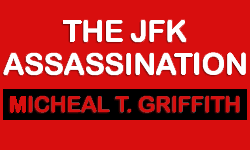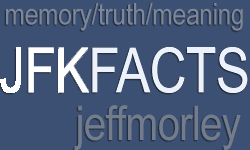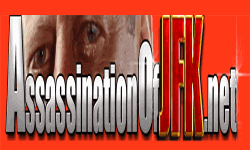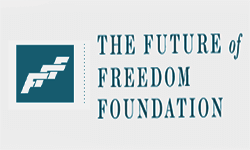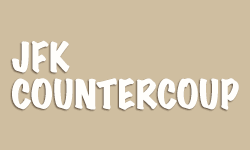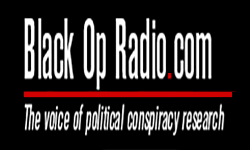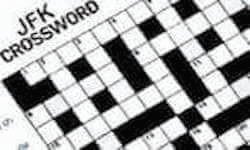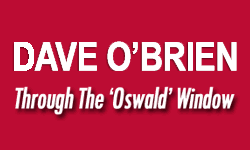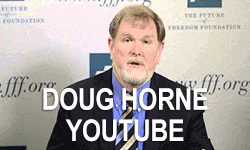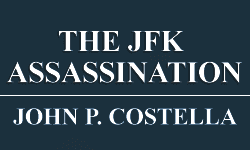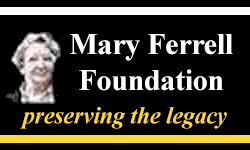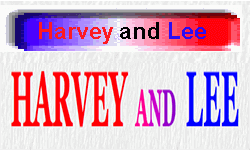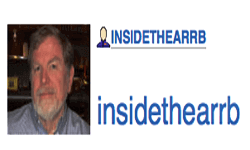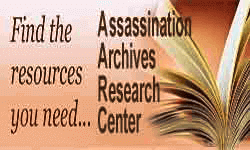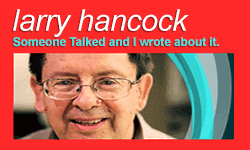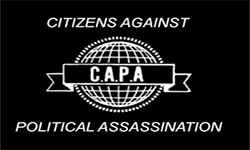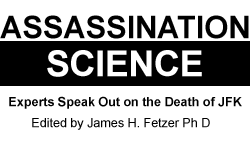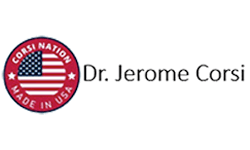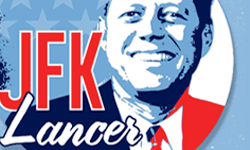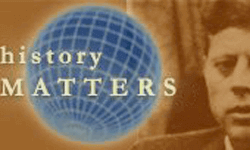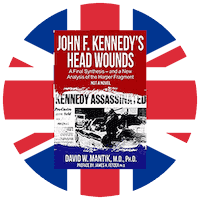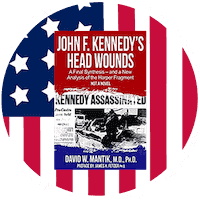
Articles and Research on the JFK Assassination by David W. Mantik M.D, Ph.D.
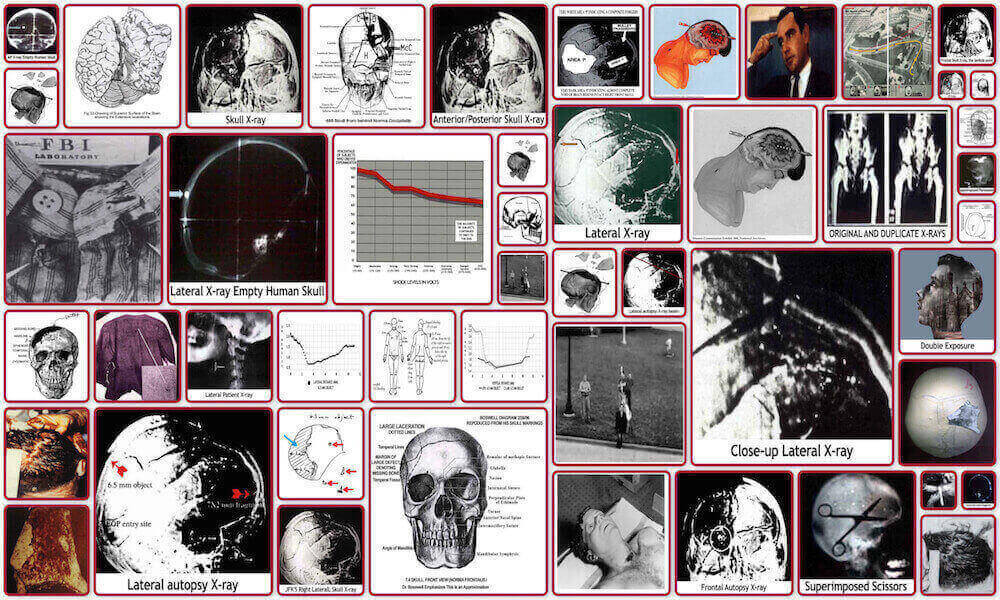
About Dr. David Mantik
David W. Mantik, MD, PhD is a radiation oncologist from Rancho Mirage, CA, USA. He received his doctorate in physics from the University of Wisconsin and then did a post-doctoral fellowship at Stanford University. Next came a tenure-track faculty position in physics at the University of Michigan, after which he left for medical school at the same institution. After internship and residency in radiation oncology at the LAC/USC Medical Center in Los Angeles, he joined the faculty at the Loma Linda University, where he held a fellowship from the American Cancer Society.
For over 40 years, he has treated cancer patients with X-rays, electrons, and protons. This requires meticulous knowledge of both external and internal anatomy—in the only medical specialty in which this is critical (or else tumors will be missed). In 1993, he visited the National Archives on four separate days to examine the autopsy X-rays and photographs. Altogether he has visited nine times over multiple years. Whilst there he used a technique called optical densitometry—to study the X-rays.
This technique has been available for many years but had never been applied to the JFK autopsy X-rays. It measures the transmission of ordinary light through selected points of the X-ray film. In principle, by using thousands of such points, a three-dimensional topographic map of the X-rays could be constructed. The higher points on this map would represent the blackest areas of the X-ray film and would correspond to areas in the body where the most X-rays had struck the film.
Such a map would be much richer in its details. For a normal human skull, the range of peaks and valleys on such a map should fall within a well-defined range. Any exceptional values—and especially those that lay unnaturally far outside would raise questions of authenticity. Based on three powerful clues from the extant autopsy X-rays at NARA, this data shows that the three skull X-rays are copies and that each one has been critically altered. One change was done quite specifically to incriminate Oswald. For further discussion, see his e-book, JFK’s Head Wounds.
Here are his comments about historians.
Between 1994 and 1998, the Assassination Records Review Board (ARRB) processed for release approximately 60,000 JFK assassination documents. ... Its staff also conducted new depositions and interviews with many medical witnesses, some completely new to the case. This wide panorama of fresh sources amassed a compelling case for a post-assassination cover-up in the medical evidence, an area heretofore almost totally ignored by historians. Inasmuch as the assassination is a major event of the twentieth century, and may well represent a turning point in American history, it is incumbent upon historians to understand and explain this event—as well as those that surround it. To date, however, a deafening silence has reigned on these matters, as historians have preferred to tolerate the harvest of The Warren Report rather than to cultivate their own fields. Possibly inquisitive historians, naturally enough, have no craving to be tainted as “barmy” by the media paintbrushes, as well might befall them were they to admit publicly to such curiosity. The plain fact, though, is that this controversial issue frightens historians; most genuinely fear for their own professional prestige and many subconsciously are afraid of what would gaze back at them from the subterranean depths of this case were they to peer too intently into the well of history. Given the unique nature of these events, and their profound impact on America, this fear is understandable. Ultimately, however, these issues must be faced honestly and responsibly. It is no longer sufficient merely to quote a lawyer turned journalist on these serious questions, nor can the matter be left to the most amateur of professions—the media. Given the manipulation of the autopsy materials (which were controlled by the Secret Service), the post-assassination cover-up necessarily required the assistance of key government personnel, probably at a high level, possibly even the highest. The growing body of evidence for this conclusion is now simply too great to ignore. Heretofore, the historians' tacitly donned mantle of innocence radiated an aura of genteel credibility, but that mantle has become threadbare. If historians continue to deny the deceitful reality underlying the post-assassination cover-up, they risk becoming accessories after the fact. The bar of history is even now calling them to the stand. The time for a response has come.
News
David Mantik Presentation The National-Security State and the Kennedy Assassination
Go Here
After my lecture ends, go to about 1:30 for the video testimony of chief autopsy pathologist, James Humes, MD, before the HSCA, where he lied about the entry wound site on the back of JFK's head.
There is a blank segment of several minutes before that, which occurred while we tried to activate the video, so skip that useless part.
During the QandA, I forgot to look at the camera--so my apologies. I suspect I was distracted by the moderator's image in a corner of my screen.
Enjoy!
David Mantik
Re: A Prosecutor [Bugliosi] Takes on the JFK Assassination
March 25, 2009 [email protected]
Letters to the Editor:
Sheldon M. Stern is now “absolutely convinced” that Vincent Bugliosi got it right—Oswald alone killed JFK. Inexplicably, though, Stern admits that Bugliosi “does not pretend to be objective.” Every issue of Skeptic Magazine state: “Skepticism is a provisional approach to claims. It is the application of reason to any and all ideas… It is a method, not a position.” So why has Skeptic abruptly abandoned skepticism in the JFK case? Stern quotes two prominent “researchers” as asking Bugliosi what would convince him of conspiracy. Bugliosi’s reply: “Only evidence.” The person who asked that question was me. In my view, Bugliosi can recite the correct sound bites, but he fails utterly to deliver. (See my online review — “Reclaiming History by Vincent Bugliosi: A Not-Entirely-Positive Review.”) At his request, I gave Vince a laundry list of critical issues. (Twenty Conclusions after Nine Visits) Nonetheless, he chose to evade them. That is not merely my opinion. During several phone calls to me, initiated by Vince, he advised me that I was the only reviewer he had contacted. He also volunteered that he should have paid more attention. Of course, none of that is in print. All that remains is my glowing dust cover praise of his prosecutorial skills. Vince simply cannot stop playing prosecutor. But that is exactly what this case no longer needs. What it does need (especially the Oswald evidence) is a thorough-going skeptic, for which Vince has no professional preparation (nor does Stern).
My review cites The Two Cultures (1959) by C.P. Snow (a physicist): there is an unbridgeable chasm between the sciences and the arts (or in this case, between science and the law). My background in both physics (Ph.D.) and medicine (certified by the American Board of Radiology) permitted me to play the skeptic to the hilt. For example, any disciple of the Warren Commission (Stern included) is required to pledge allegiance to the following;
• Bugliosi believes that JFK was struck high on the posterior skull. Therefore, he must also believe that all three pathologists—and the radiologist—were wrong by 4 inches (sic).
• He must next believe that an internal cross section of this bullet (6.5 mm diameter) was sliced out, descended 1 cm lower and lodged near his entry site. (The nose and tail of this bullet were supposedly found inside the limo.)
• In addition, he must believe that the trail of metallic debris still lay well above his entry site. No ballistics expert has ever seen so much nonsense from one bullet (Murder in Dealey Plaza, edited by James Fetzer, p. 400).
Even worse, the congressional ballistics expert, Larry Sturdivan, has insisted that the 6.5 mm object could not be an authentic metal fragment, thereby depriving the official investigations of their chief linchpin. My optical density data (from the extant JFK X-rays) now explain why no one saw this bizarre object during the autopsy. To highlight this farce, my then six-year-old son immediately identified this object (in photos of the X-ray)—without any prompting.
So, who is the true skeptic—the prosecutor who tilts second-hand data to fit his pre-ordained case, or the scientist with hundreds of first-hand data points (on the extant JFK X-rays), who has also performed appropriate control experiments?
The interested reader can consult Skeptic magv6n4: “JFK—Case Still Open” by Arthur Snyder (another physicist). He can also peruse an entire raft of new books—Brothers by David Talbot; Oswald and the CIA (updated) by John Newman; JFK and the Unspeakable by James W. Douglas; and Breach of Trust by Gerald D. McKnight. Meanwhile, for the medical evidence, we all await the magnum opus by Douglas P. Horne, an insider at the Assassination Records Review Board (and a somber skeptic).
In summary, Stern is hopelessly, and astonishingly, mired in the remote past and seems quaintly obsessed with a work of fiction—a movie of all things. The true skeptic can do far better. And so, can the editors of Skeptic Magazine.
These comments (see below) have been de-activated--because they violated "community standards."
James Moore must have inside knowledge: The JFK murder conspiracy is like QAnon
Moore: Government papers have been released, ballistics experts and, yes, physicists, have looked at the evidence and concluded that the fatal bullet came from the Texas Book Depository building.
MANTIK: I had not known this. It is amazing what one can learn from a Journalist who cannot cite a single fact. Virtually every expert I know has concluded exactly the opposite. Moore really should share his Incontrovertible sources with us.
Moore: It has become increasingly hard for the woman or the man in the street to discern between genuine scandal and partisan hokum whipped up for political purposes.
MANTIK: I already knew this, but I also knew that Journalists—inevitably with no training in physics or in medicine were equally Ignorant.
Moore: The “fact” is that this case, at its core, is backed by little more than the “feeling” that one man simply couldn’t have, on his own, changed history as Oswald did.
MANTIK: This is the first I’ve learned that my optical density measurements were so deeply affected by my “feelings.” it is also astonishing to learn that for nearly 30 years I have missed this. likewise, it is enlightening to learn that every single one of my fellow warren commission critics (many with PhDs and MDs) were also overwhelmed by their mere “feelings.”
MANTIK: Is this the same Jim Moore (or perhaps his son) who wrote this lone assassin book? Conspiracy of One: The Definitive Book on the Kennedy Assassination by Jim Moore
A long list of "Believers in a JFK Conspiracy" can be found in Murder in Dealey Plaza here (page 404):
John Barbour
Today, John Barbour and I were together on a 5-person panel for CAPA. Here
His film is absolutely marvelous—jam packed with rare historical footage and ancient interviews. Here
A Meeting of the Minds
Included in this video the JFK Assassination autopsy research is discussed. The panel consists of Dr. Mike Chesser, Dr. David Mantik, William Matson Law and James C. Jenkins. Filmed on location in Dallas, TX Go Here to watch.
Black OP radio
David recently featured on Black Op Radion Listen here
Responce to show from Jefferey Roger Sundberg
David
Great work - you remain at the top of your form - cogent, conscientious, competent, persuasive. And of course Len knows how to bring out
Not that Litwin, floundering in the ocean of facts and observations you set forth, needs anybody to throw him an anchor, but on page 935 of his opus Doug makes the following point on the various opinions in the official record that Dr. Humes offered on the actual location of the entry wound, which I don't think has been given sufficient play in the struggle against the Litwins, Bugliosis, Posners etc:
“Humes has now gone from omitting any mention of the beveled notch on the skull plate (in the autopsy report) to denying that such evidence existed in the periphery of the skull defect (in his Warren Commission testimony), to describing the photos of it as the posterior skull (in November of 1966), to acknowledging that it is indeed evidence of exit and stating that it is in the right parietal region (in the Military Review report), to abandoning that position and agreeing with the HSCA panel’s consensus that the exit wound in photograph no. 44 is in the frontal bone forward of the coronal suture. This is not the behavior of a man sure of his convictions; rather, it is the sorry behavior of a man involved in a coverup who, once caught in a lie, feels he has no choice but to continue lying and modifying his answers to save his skin, and thus avoid admitting he was involved in the coverup of the 35th President’s assassination. The reader will have noticed by now that at no time during the interview did Humes volunteer the information that he had originally described the photographs in which the beveled semcircular notch appears as representing the posterior skull."
Again, fantastic work on the podcast last night, and in the long and substantive review that it was based on!
Jeff
Jefferson Morley
On April 29, my attorney Dan Hardway filed a petition for certiorari asking the Supreme Court to review my case, Morley v. CIA. When I filed this Freedom of Information Act (FOIA) lawsuit 16 years ago, I sought certain files related to the assassination of President John F. Kennedy in 1963. Perhaps the biggest single revelation generated by Morley v. CIA was the medal given to Joannides. Inside the agency, one might say that Joannides protected the agency’s “sources and methods” around the Oswald/AMSPELL/FPCC operation. Outside the agency, you could say he was honored, at least in part, for perpetuating the JFK cover-up. House Select Committee on Assassination general counsel G. Robert Blakey, now emeritus professor at Notre Dame law school, told PBS Frontline that Joannides had obstructed Congress’ investigation, a felony. Was he concealing the existence of a CIA operation to falsely blame Oswald for killing JFK? Or just CIA incompetence? Absent full disclosure, definitive conclusions are elusive. Morley v. CIA fell short of getting the whole story. The agency identified but never released 330 Joannides files I sought. These include 44 documents from 1963 and 1978, which concern Joannides’ cover and “intelligence methods.” They are key to the JFK story. I suspect they identify the senior agency officers who authorized psychological warfare operations that linked Oswald to Castro’s Cuba before and after JFK was killed. According to the agency, not a single word contained in these antique records – even with any potentially appropriate redactions for sources and methods – can be made public in 2019 without threatening “national security.” Given that most of the records in question are more than 50 years old, the claim seems far-fetched, if not suspicious. Nonetheless, the federal courts agree it is accurate. ‘Entirely Unreasonable’ The question now before the Supreme Court is not conspiracy. The issue is accountability and how the FOIA seeks to insure it. In the July 2018 majority opinion, Kavanaugh ruled the CIA acted “reasonably” in spurning my JFK queries. Judge Henderson countered that the government’s actions were “entirely unreasonable” and I should be awarded court costs. The high court now has the opportunity to decide. The answers are a long time coming. By Jefferson Morley April 30, 2019 See Here
Jim DiEugenio
The reason for the JFK Records Act was not to minimize government secrecy or to increase government transparency, but rather to “tamp down some of the assassination conspiracy theories. It is always astonishing to see one's fundamental beliefs corrected by the media. See Here
Dr. Malcolm Perry
Malcolm Perry lied to the Commission about the throat wound - From a newly released file. *The Journal follows the tenets of the Creative Commons Attribution License providing open access to scholars through the use of a Digital Objective Identifier (DOI) by Google Scholar. See Here Further Update on Malcolm Perry's lie (about the throat wound) to the Commission... See Here Of course the throat wound was an entry (perhaps a glass shard from the windshield?):The loyalists' persistent claim that ER doctors consistently misinterpret wounds (e.g., entrance vs. exit) cleverly evades these facts: 1. Such a tiny wound could not be duplicated in experiments by the Commission; 2. Milton Helpern, who had done 60,000 autopsies, had never seen an exit wound that small; 3. Before political leverage was exerted, the NPIC's first scenario included a throat shot at Z-190; 4. During a Commission Executive Session (December 18, 1963), John McCloy, Hale Boggs, and Gerald Ford actually discussed a possible frontal shot from the overpass. For further details, see my discussion under the paragraph, "The Throat Wound," See Here
Resources
Articles and Links











